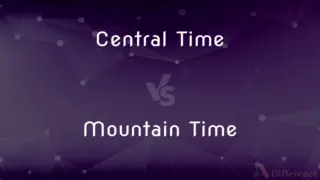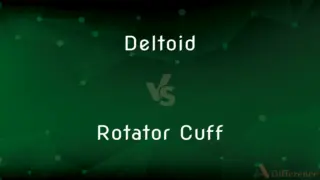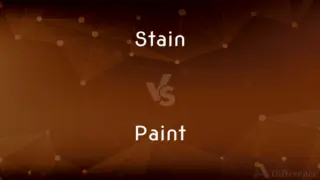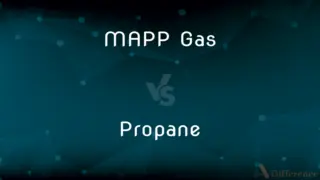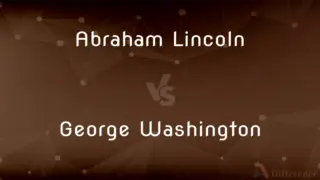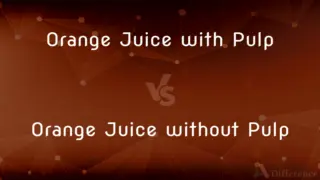Liquify vs. Liquefy — What's the Difference?
By Urooj Arif & Fiza Rafique — Updated on March 3, 2024
Liquify refers to the process of turning into a liquid by heating or chemical means, often used in digital imaging to distort images. Liquefy, strictly pertains to the physical process of becoming liquid, especially under the influence of heat.

Difference Between Liquify and Liquefy
Table of Contents
ADVERTISEMENT
Key Differences
Liquify is a term often associated with the transformation of solids into liquids, commonly through heating or chemical reactions. It's also a popular term in digital imaging, where it refers to a tool in graphic software that allows users to manipulate and distort images as if they were liquid. Whereas liquefy strictly refers to the physical process of turning a substance from a solid or gas into a liquid state. This process usually occurs due to the application of heat or pressure, making it a key concept in both chemistry and physics.
While liquify can be seen as a versatile term that crosses over from scientific processes to digital artistry, liquefy remains firmly rooted in the scientific realm, emphasizing the physical changes that substances undergo. The distinction highlights the broader applicability of the term "liquify," extending its relevance beyond the strict confines of science. On the other hand, liquefy is often used in contexts where precision and clarity about the physical state change of materials are paramount. It's crucial in discussions about phase transitions, where understanding the conditions under which a substance liquefies is fundamental. Liquify, with its broader implications, allows for a wider range of applications, from describing the melting of ice to the artistic manipulation of images to create surreal effects.
The term liquefy is specifically important in industries where the controlled conversion of gases or solids to liquids is a critical process, such as in the manufacturing of chemicals or the processing of natural gas. Liquify, due to its additional meaning in the digital realm, emphasizes the transformative power of tools and technology, showcasing how digital manipulation can alter visual realities.
"Liquefy" is often used to describe the process of making liquids for consumption or use in various processes, emphasizing its practical applications. In contrast, "liquify" might be used more creatively, suggesting a broader range of transformations that can appeal to both scientific and artistic interests.
Comparison Chart
Definition
To turn into a liquid, used in both scientific and digital contexts
Strictly to become liquid, especially by heat
ADVERTISEMENT
Context
Scientific processes, digital imaging
Scientific processes, particularly phase transitions
Applications
Digital art, chemical processes
Chemistry, physics, industrial processes
Example Uses
Transforming images in graphic software
Melting ice, converting natural gas to liquid form
Key Distinction
Broad applicability, including artistic manipulation
Focus on physical state change due to environmental factors
Compare with Definitions
Liquify
Turning a solid into a liquid, often through heat or chemicals.
Salt liquifies into water to form a solution.
Liquefy
The process of becoming liquid, particularly under heat.
Ice cubes liquefy quickly in the sun.
Liquify
A tool used in photo editing software to distort images.
She used the liquify tool to subtly reshape the portrait.
Liquefy
A specific state change from solid or gas to liquid.
The application of pressure caused the carbon dioxide to liquefy.
Liquify
Altering materials to achieve a fluid appearance.
The artist liquified wax to create flowing shapes in his sculpture.
Liquefy
Used in the context of converting gases to liquids.
The plant is designed to liquefy natural gas for easier transport.
Liquify
The process of turning solid ingredients into liquid.
The chef liquified chocolate to drizzle over the dessert.
Liquefy
Relating to the physical changes substances undergo.
Studying how various metals liquefy at different temperatures is essential for materials science.
Liquify
The action of making a substance liquid.
The laboratory process involved liquifying the sample for analysis.
Liquefy
Making liquid forms of food ingredients.
To make the sauce, you first need to liquefy the butter.
Liquify
Variant of liquefy.
Liquefy
To melt (a solid) by heating.
Liquify
Same as liquefy.
Liquefy
To condense (a gas) by cooling.
Liquify
Make (a solid substance) liquid, as by heating;
Liquefy the silver
Liquefy
To become liquid.
Liquify
Become liquid or fluid when heated;
The frozen fat liquefied
Liquefy
(intransitive) To become liquid.
The substance liquefied upon heating.
Liquefy
To convert from a solid form to that of a liquid; to melt; to dissolve; and technically, to melt by the sole agency of heat.
Liquefy
To convert from a gaseous form into a liquid; as, to liquefy natural gas.
Liquefy
Make (a solid substance) liquid, as by heating;
Liquefy the silver
Common Curiosities
What is an example of a substance that can easily liquefy?
Water is a classic example; it can easily liquefy from ice to liquid water with the application of heat.
How does liquefy differ from liquify in scientific terms?
Liquefy specifically refers to the physical process of turning a solid or gas into a liquid, often due to heat, whereas liquify can also apply to digital image manipulation.
Can gases be liquified?
Yes, gases can be liquified, usually by applying pressure or reducing temperature, in a process important for industrial applications like natural gas processing.
Is the liquify tool in Photoshop used for scientific purposes?
No, the liquify tool in Photoshop is primarily used for artistic and image editing purposes, allowing users to distort and manipulate images creatively.
Do all solids liquefy at the same temperature?
No, different solids liquefy at different temperatures, which is a fundamental concept in the study of materials and phase transitions.
Can liquify have culinary applications?
Yes, in a culinary context, liquify can refer to the process of turning solid food ingredients into liquid form, often for sauces or soups.
Is liquefying a reversible process?
Liquefying can be reversible; for instance, water can transition from liquid to solid (freezing) and back to liquid (melting).
Can liquefy and liquify be used interchangeably?
While they are often used interchangeably, liquefy is more specific to physical and chemical processes, and liquify can also refer to digital image manipulation.
Can the process of liquefying substances be controlled?
Yes, through the careful application of heat, pressure, and sometimes catalysts, the process of liquefying substances can be precisely controlled.
What does it mean to liquify something?
To liquify something means to turn it into a liquid, either through heating, chemical reactions, or using digital tools for image manipulation.
Why is the ability to liquefy materials important in chemistry?
Liquefying materials is crucial in chemistry for reactions, separations, and analyses that require substances to be in liquid form for effective processing.
What role does pressure play in liquefying gases?
Pressure, when increased, can help gases liquefy by bringing molecules closer together, overcoming their kinetic energy.
What industries rely on the ability to liquefy gases?
The energy sector, particularly in the processing and transport of natural gas, relies heavily on the ability to liquefy gases.
How does temperature affect the ability of a substance to liquefy?
Temperature plays a critical role; generally, increasing temperature can cause solids to liquefy, while decreasing temperature can cause gases to liquefy.
How does the liquefy tool affect digital images?
The liquify tool allows artists and editors to push, pull, rotate, reflect, pucker, and bloat any area of an image, altering its shape and appearance.
Share Your Discovery

Previous Comparison
Precisely vs. Exactly
Next Comparison
Oar vs. RowAuthor Spotlight
Written by
Urooj ArifUrooj is a skilled content writer at Ask Difference, known for her exceptional ability to simplify complex topics into engaging and informative content. With a passion for research and a flair for clear, concise writing, she consistently delivers articles that resonate with our diverse audience.
Co-written by
Fiza RafiqueFiza Rafique is a skilled content writer at AskDifference.com, where she meticulously refines and enhances written pieces. Drawing from her vast editorial expertise, Fiza ensures clarity, accuracy, and precision in every article. Passionate about language, she continually seeks to elevate the quality of content for readers worldwide.














